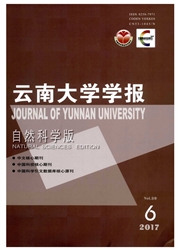

 中文摘要:
中文摘要:
金沙江干热河谷水电站建设弃渣场废弃地是植被恢复最困难区域,采用种子萌发实验的方法对金安桥水电站不同类型渣场的土壤种子库进行了研究.结果表明:渣场平台土壤种子库储量92~633粒·m-2,渣场边坡土壤种子库储量25~325粒·m-2.土壤种子库萌发实验共统计到12科20属20种植物种子,以十字花科(54.55%)和菊科(26.70%)为优势科,草本(90.91%)种子储量占绝对优势,灌木和乔木则很低,以荠菜(54.55%)为优势种.明挖为主弃渣边坡较洞挖为主弃渣边坡的土壤种子库储量大,随时间推移储量在下降,应尽早采取有效措施进行渣场恢复.
 英文摘要:
英文摘要:
Dumping yards generated in hydropower station construction in dry-hot river valley of Jinsha River are the most difficult places to restore,a study on the soil seed bank of different dumping yards generated in Jinanqiao hydropower station construction was carried out based on seed germination trial.The results showed that the seed densities in the soil seed banks of dumping yard platforms were between 92 and 633 seeds·m-2 in the top soil of 10 cm,the seed densities in the soil seed banks of dumping yard side-slopes were between 25 and 325 seeds·m-2.The total of the seed bank of different types dumping yards belongs to 12 families,20 genera and 20 species,Cruciferae and Compositae were dominant families,herb seeds were dominant on the aspect of seed densities,but the densities of trees and shrubs were very low,Capsella bursapastoris was dominant species.The seed densities of the main open-digging were higher than those of the main hole-digging,and the seed densities descended as time past,efficient measures should be taken to restore the dumping yards as soon as possible.
 同期刊论文项目
同期刊论文项目
 同项目期刊论文
同项目期刊论文
 期刊信息
期刊信息
